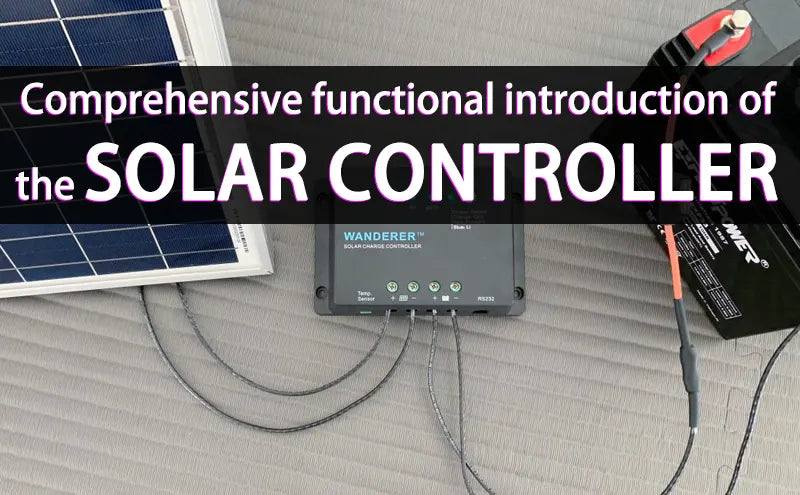
Main content:
The full name of solar controller is solar charge and discharge controller. It is an automatic control equipment used in solar power generation system to control multiple solar cells to charge the batteries, and the batteries to supply power to the load of the solar inverter.
1. Introduction to solar controller
The control system of the solar controller consists of a solar panel, a battery, a controller and a load. Solar controller is a device used to control photovoltaic panels to charge batteries and provide load control voltage for voltage-sensitive devices.
Almost all solar power generation systems powered by batteries desperately require a solar charge and discharge controller, including off grid solar batteries. The role of the solar charge and discharge controller is to regulate the power delivered from the solar panel to the batteries.
Battery overshoot, at least significantly, reduces battery life, from damage to the battery at worst until it is not functional. At present, the controller is developing to multi-function, and there is a trend of integrating the traditional control part, inverter and monitoring system.
2. The role of the solar controller
The most basic function of the solar charge and discharge controller is to control the battery voltage and open the circuit. When the battery voltage rises to a certain extent, stop the battery charging. Controllers are used in most photovoltaic systems to protect the batteries from overcharge or overdischarge.
Overcharging may vaporize the electrolyte in the battery, causing failure. And over-discharge of the batteries can cause premature battery failure. Overcharge and overdischarge can damage the load. Therefore, the controller is one of the core components of the photovoltaic power generation system, and it is also the main part of the balance system BOS (balance of system).
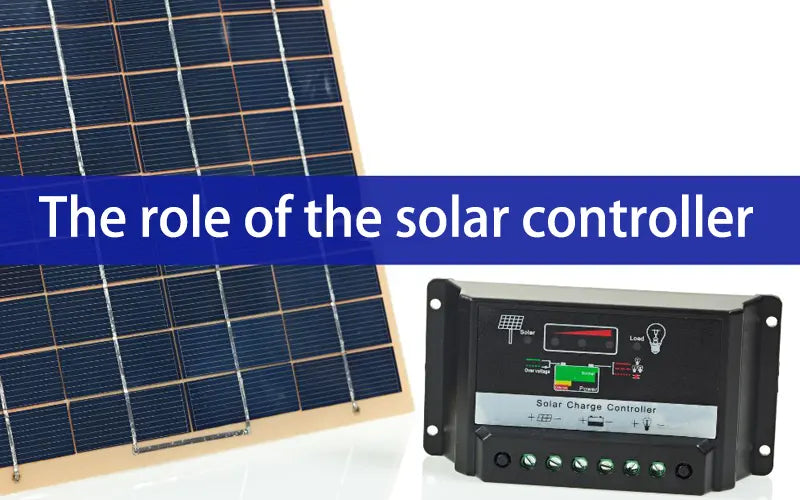
In simple terms, the role of solar controller can be divided into:
- Power regulation function
- Communication capabilities: simple indication function, protocol communication function and wireless and other forms of background management
- Complete protection function: electrical protection reverse connection, short circuit, overcurrent, etc.
3. The principle of solar controller
Solar panels belong to photovoltaic equipment (mainly semiconductor materials), which are illuminated by light and produce electric current. If the generated current is directly charged into the battery or directly supplied to the load, it is easy to cause damage to the batteries and load, and seriously reduce life.
Therefore, we must first feed the current into the solar controller and digitally regulate it using a series of dedicated chip circuits. And add multi-stage charge and discharge protection to ensure the safe operation and service life of the battery and load. The purpose of this is:
First, to stabilize the discharge current. The second is to ensure that the battery is not overcharged. Third, a series of load and batteries monitoring and protection can be performed. If you want to use AC equipment, you also need to add inverter inversion to AC before loading.
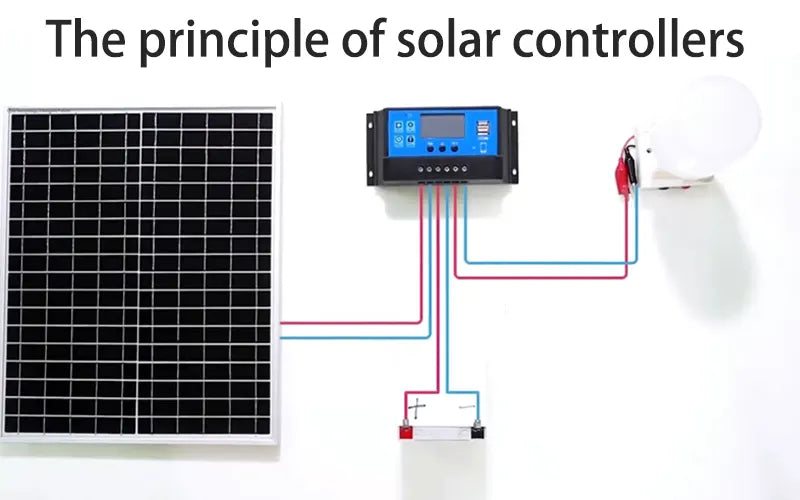
● Key features
A single-chip microcomputer and special software are used to realize intelligent control Accurate discharge control using battery discharge rate characteristic correction.
It has automatic control such as overcharge, overdischarge, electronic short circuit, overload protection, and unique anti-reverse polarity protection. The intuitive light-emitting tube indicates the current batteries status, allowing the user to know the condition of use.
4. Categorization and specific functions
● Classification in the market
Popular solar controller on the market mainly include ordinary solar controller, PWM solar controller and MPPT solar controller. These can also apply to the home energy storage due to the specific characteristics.
- Normal solar controller
Ordinary solar controller are the first generation of technology, and the working principle is to hook the output of the solar panel directly to the battery port. When the battery is sufficient, it is disconnected. Due to the internal resistance of the batteries, it is difficult to fully charge the batteries, and solar panels are not fully utilized. The charging conversion efficiency is only 70-76%, which has been eliminated by the market.
- PWM solar controller
PWM solar controller is the second generation technology. Now the most popular mode of operation on the market is PWM control mode. Compared with the ordinary solar controller, it can solve the problem of batteries dissatisfaction, and the charging conversion efficiency is 75~80%, but the solar panel is not fully utilized.
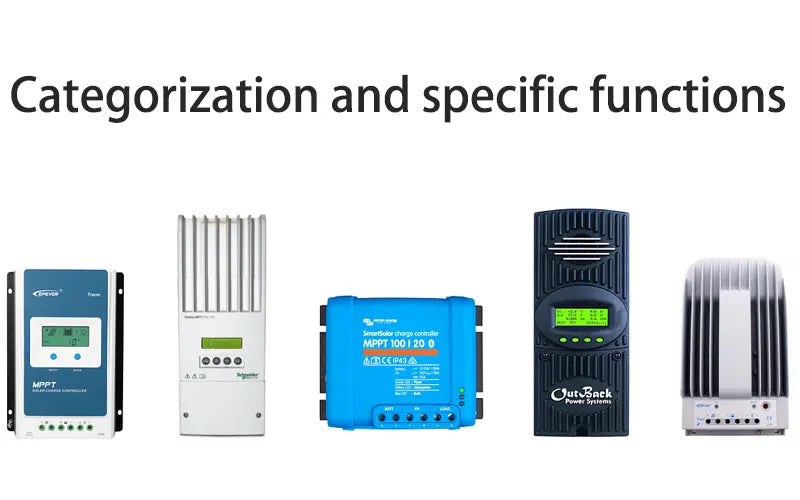
- MPPT solar controller
MPPT solar controller is the third generation technology, the highest end solar controller. MPPT solar controller refers to a solar controller with "maximum power point tracking" function, which can detect solar panel voltage and current in real time. The system always charges the batteries at maximum power and has excellent battery management. It is divided into MPPT charging, constant voltage average charging and constant voltage floating charging.
5. Protected mode
The new solar controller has the following key functions:
● Overcharge protection
When the charging voltage is higher than the protection voltage, it automatically shuts down to charge the batteries. Thereafter, when the voltage drops to the maintenance voltage, the battery enters a floating charging state. When the recovery voltage is lower, the float is turned off and enters the equalization state.
● Overdischarge protection
When the battery voltage is lower than the protection voltage, the controller automatically turns off the output to protect the batteries from damage. When the battery is charged again, it can automatically restore power.
● Overcurrent load and short circuit protection
After the load current exceeds 10 A or the load is short-circuited, the fuse is blown and can continue to be used after replacement.
● Overvoltage protection
When the voltage is too high, the output is automatically turned off to protect the appliance from damage. It has an anti-reverse loading function. Diodes are used to prevent the batteries from charging the solar cell. With lightning protection function When lightning strikes occur, varistors can prevent lightning strikes and protect the controller from damage.
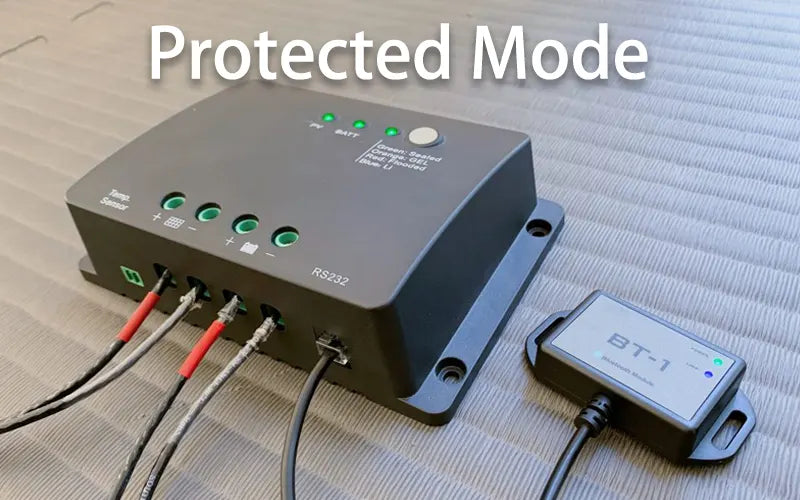
● Reverse battery protection
Anode and cathode polarity reversed and can continue to be used after correction. With temperature compensation function Monitor the temperature of the batteries, and correct the charge and discharge values to make the battery work in the ideal state.
● Solar charge controller charge and discharge protection
To protect the battery, a charge controller is included in most solar power systems. Its most basic function is to turn off the charging current when the battery is full. Due to the different charging characteristics of various batteries, the charging controller used should be selected according to the battery type.
6. Solar charge controller charge and discharge protection
● Direct charge protection point voltage
Direct charging, also called emergency charging, belongs to fast charging, generally charging the battery with a high current and relatively high voltage when the battery voltage is low.
The voltage of the direct charging protection point is generally also the voltage of the overcharge protection point, and the voltage at the end of the battery cannot be higher than this protection point when charging. Otherwise, it will cause an overcharge and damage the battery.
● Equalize the voltage at the control point
After the end of direct charging, the battery will generally be left to rest for a period of time by the charge and discharge controller, allowing its voltage to naturally drop. When it drops to the "recovery voltage" value, it enters the equalization state. The average charging time should not be too long, usually a few minutes to ten minutes, and the time setting is too long but harmful.
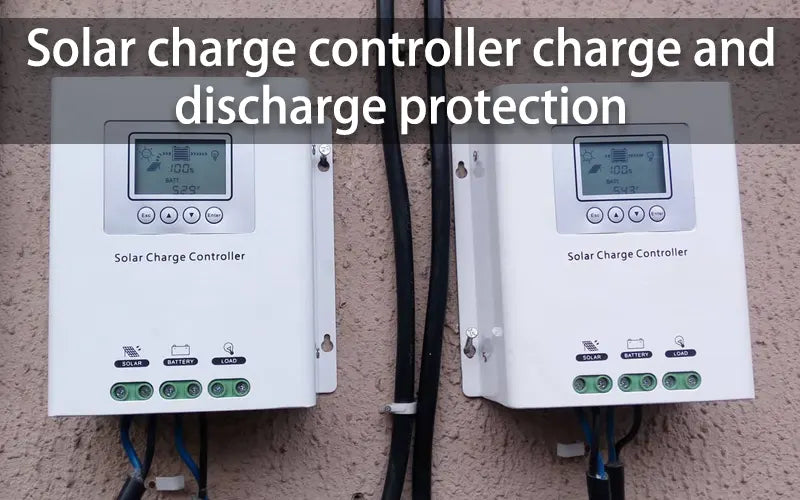
● Float control point voltage
Generally, after the average charge is completed, the battery is also left to stand for a period of time, so that the terminal voltage naturally drops. When it drops to the "maintenance voltage" point, it enters the float state. Similar to "trickle charging" (i.e., charging at low current). This is good for the battery, because the internal temperature of the battery has a great influence on charge and discharge.
● Overcharge protection termination voltage
Battery discharge cannot be lower than this value. Although battery manufacturers also have their own protection parameters, for safety reasons, generally add a little to the 12v battery overdischarge protection point voltage as temperature compensation.
7. Conclusion
The solar controller stipulates and controls the charging and discharging conditions of the batteries, and is the core control part of the entire photovoltaic power supply system. It is designed for power supply systems in remote areas. The controller's charge control and load control voltages are fully adjustable and can display battery voltage, load voltage, solar array voltage, charge current and load current.
Related articles: solar battery near me, Top 5 home energy storage companies, Lithium ion battery overcharge
















